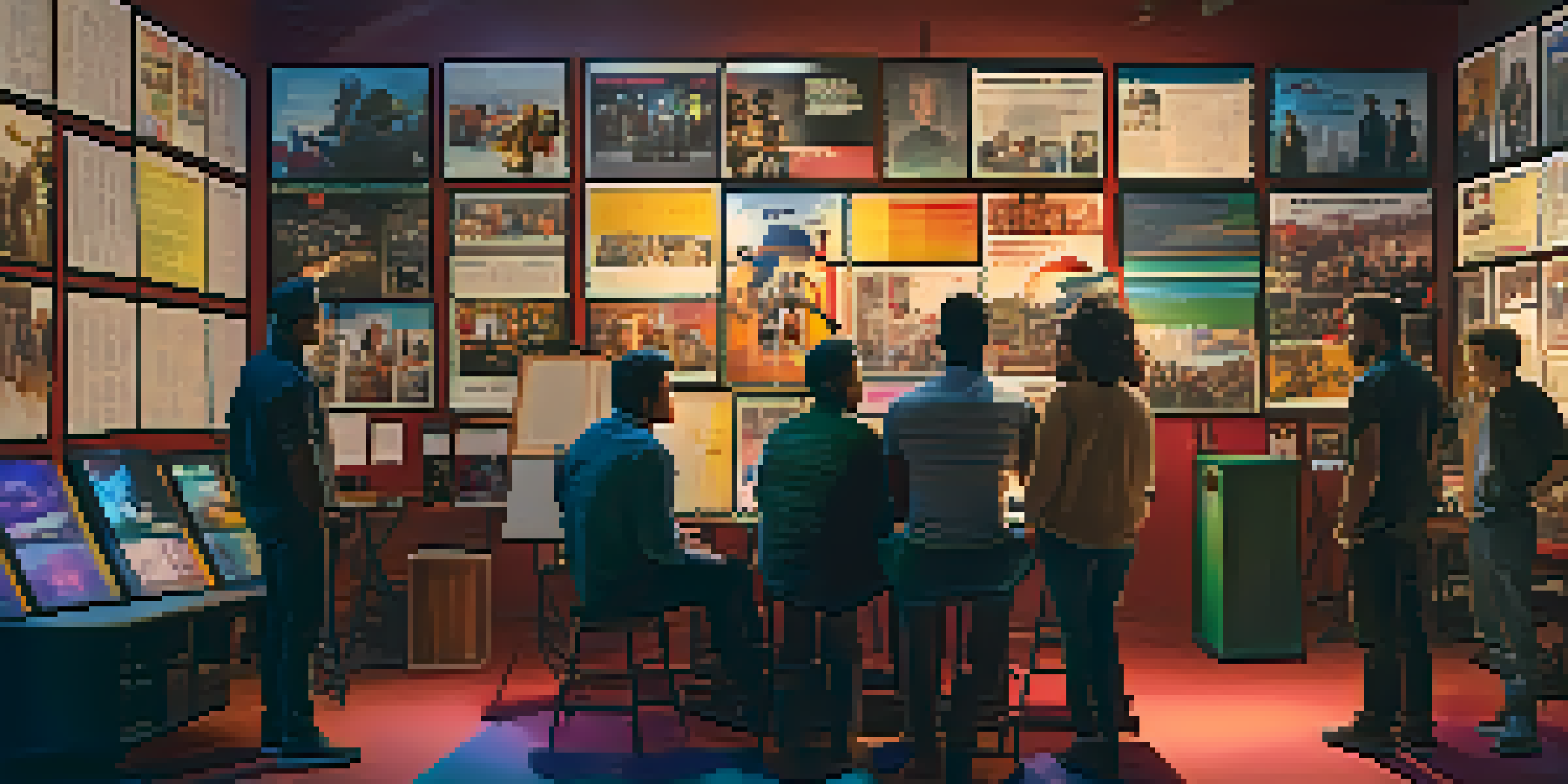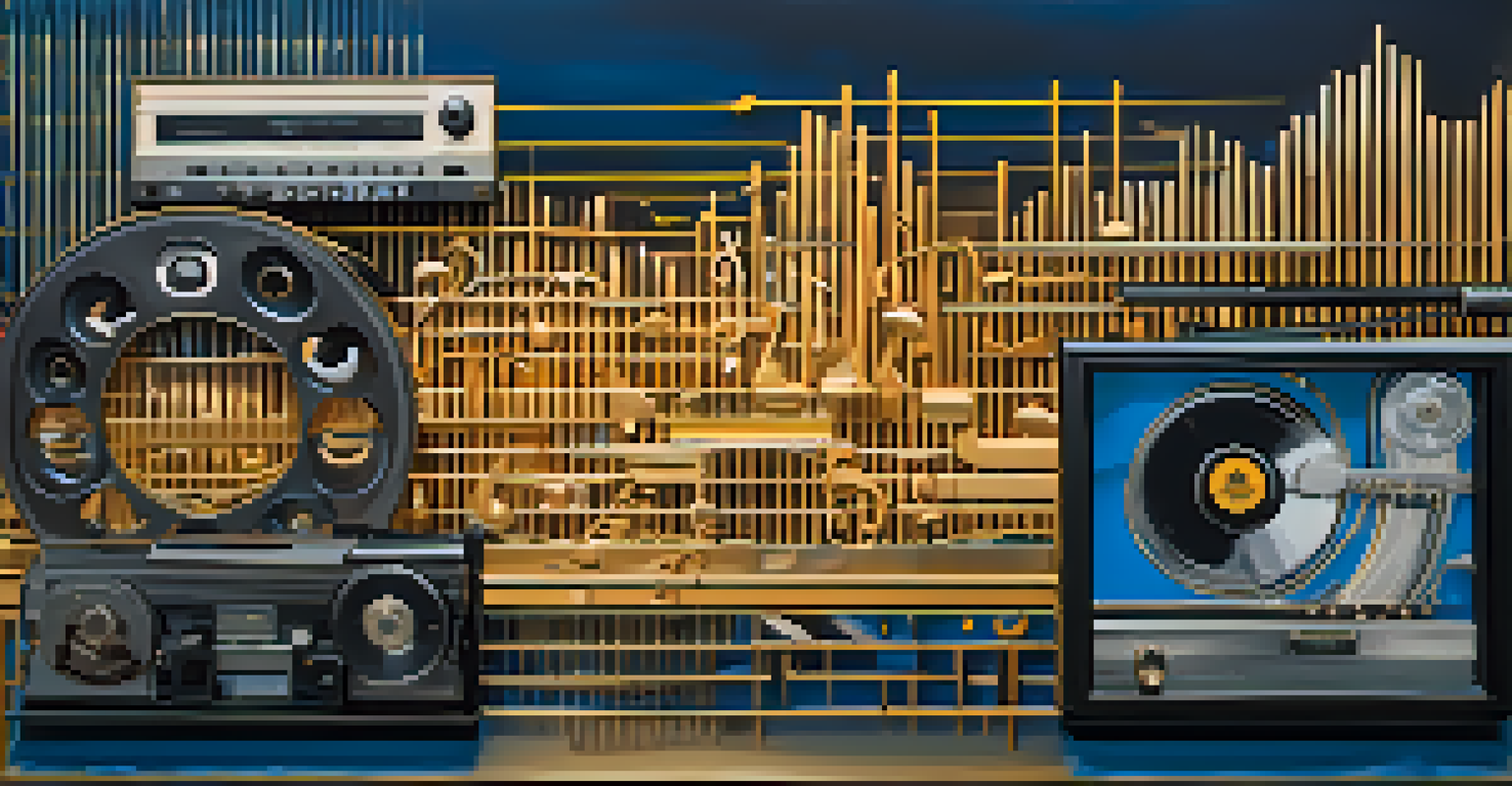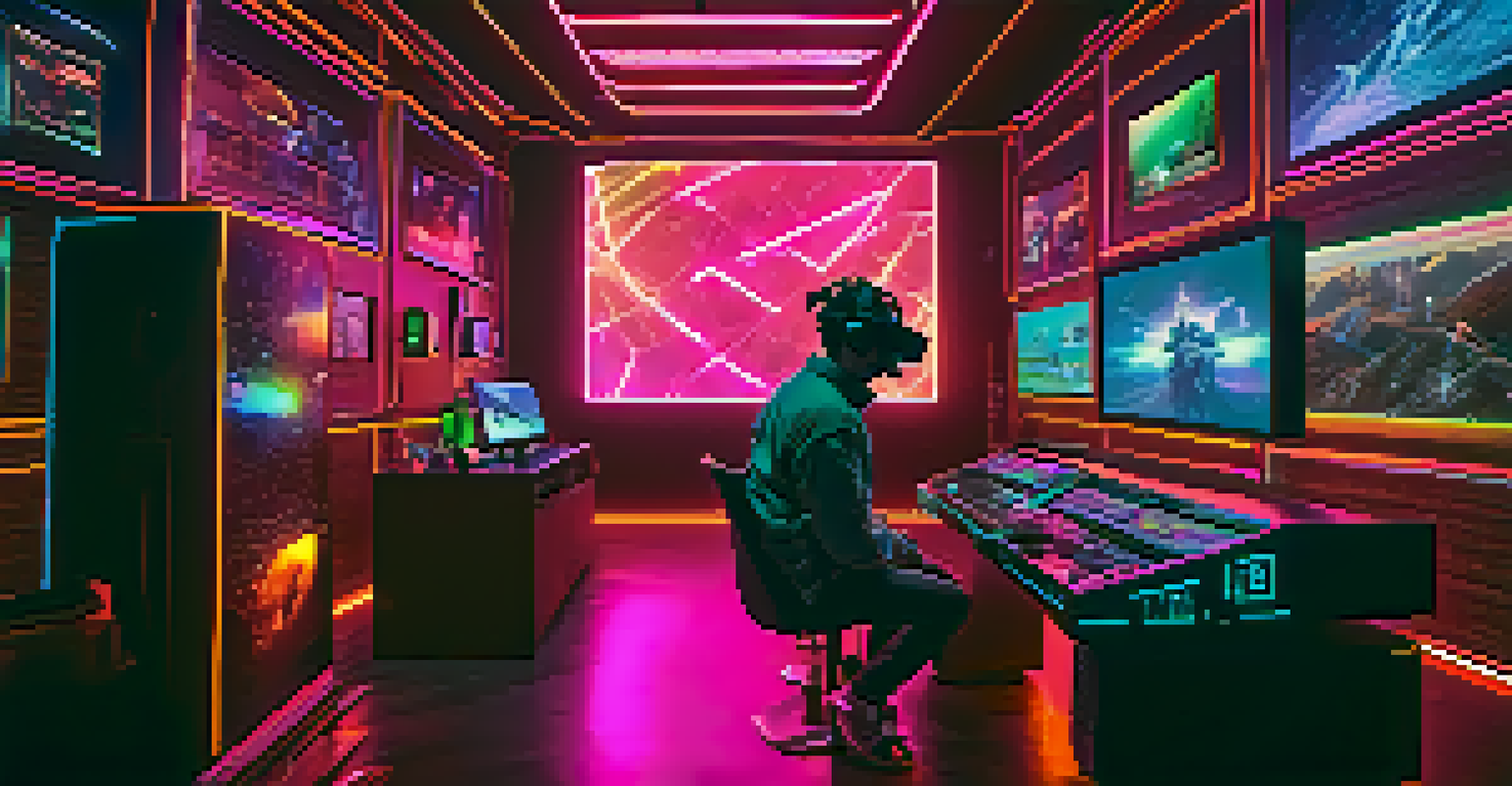The Role of Music in Film Trailers: Setting the Tone

Understanding the Importance of Music in Film Trailers
Music plays a pivotal role in film trailers, often serving as the emotional backbone that enhances visual storytelling. It sets the mood and builds anticipation, captivating audiences right from the start. Think of a trailer for a horror film: the creeping strings and haunting melodies can instantly evoke feelings of fear and suspense.
Music can change the world because it can change people.
By carefully selecting the right music, filmmakers can communicate themes and emotions that might take longer to convey through visuals alone. For instance, an upbeat, fast-paced track can generate excitement and energy, drawing viewers into action-packed thrillers. By contrast, a slow, melodic piece can create a sense of longing or nostalgia, perfect for romantic dramas.
Ultimately, the synergy between music and visuals in trailers is what makes them memorable. Audiences often remember how a trailer made them feel, which is largely influenced by the accompanying soundtrack. This emotional connection is crucial in motivating viewers to see the film.
Music as a Narrative Tool in Trailers
Music in trailers acts as a narrative device that guides the audience through the storyline's emotional arc. By manipulating tempo and dynamics, filmmakers can foreshadow plot twists or highlight character development. For instance, a sudden drop in music can signal a shocking moment, leaving viewers on the edge of their seats.

Moreover, the use of leitmotifs—musical themes associated with particular characters or ideas—can deepen audience engagement. This technique not only reinforces character identities but also evokes specific emotions tied to those characters. Imagine the triumphant score that accompanies a hero's entrance, instantly making the audience root for them.
Music Shapes Emotional Connections
The right musical score can evoke strong emotions, enhancing audience engagement and connection to the film.
By aligning musical cues with visual elements, trailers can effectively create a cohesive narrative experience. This interplay ensures that audiences are not just passively watching but are actively engaged in the story being presented, increasing the likelihood that they'll seek out the full film.
The Emotional Response: How Music Influences Audience Feelings
One of the most powerful aspects of music in trailers is its ability to evoke an emotional response from viewers. A well-placed chord or melody can trigger feelings ranging from joy to fear, often in a matter of seconds. For example, the swelling orchestral scores in epic trailers can inspire feelings of awe and excitement, making the film's release seem like a can't-miss event.
The best music is essentially there to provide you something to face the world with.
This emotional manipulation is not accidental; it’s a carefully crafted strategy that filmmakers employ to connect with their audience. When viewers resonate with the emotions conveyed through music, they're more likely to form a bond with the film before they even see it. This pre-emptive connection can be crucial in a crowded market where many films vie for attention.
Additionally, studies have shown that music can enhance memory retention. When a trailer is paired with a striking musical score, audiences are more likely to remember the film's details and share their excitement with others, creating a ripple effect of interest.
The Role of Genre in Music Selection for Trailers
Different film genres utilize music in distinct ways, reflecting the unique tone and atmosphere each genre aims to establish. Action films often rely on driving beats and intense crescendos to create a sense of urgency, while romantic comedies might feature light-hearted tunes that evoke laughter and warmth. This genre-specific approach helps to set expectations for the audience right from the trailer.
For instance, a horror trailer might incorporate dissonant chords or eerie soundscapes, creating an unsettling vibe that prepares viewers for a chilling experience. Conversely, animated family films might utilize cheerful melodies to convey fun and adventure, appealing to both children and adults alike.
Genre Influences Music Choices
Different film genres utilize specific musical styles to set the tone and expectations for viewers.
By aligning the musical score with genre conventions, trailers effectively communicate what audiences can expect, enhancing their overall viewing experience. This alignment not only captures attention but also ensures that the film appeals to its intended demographic.
The Evolution of Trailer Music Over Time
Over the years, the music used in trailers has evolved significantly, mirroring changes in cinematic trends and audience preferences. In the early days of cinema, trailers often featured simple orchestral arrangements, primarily to complement the visuals. However, as film became a more complex art form, so did its soundtracks, leading to the sophisticated scores we hear today.
Modern trailers often blend original compositions with popular songs, creating a unique sound that resonates with diverse audiences. This trend not only appeals to nostalgia but also makes the trailer more relatable and shareable. For example, using a contemporary pop hit can attract younger viewers, while a classic score might appeal to older generations.
This evolution reflects the changing landscape of the film industry and the growing importance of sound in shaping audience experiences. As technology advances, we can expect even more innovative uses of music in trailers, further enhancing their impact.
The Art of Sound Design in Film Trailers
Sound design goes hand-in-hand with music in trailers, creating an immersive auditory experience that enhances storytelling. The careful layering of sound effects alongside music can heighten tension or amplify excitement. For example, the sound of a heartbeat can build suspense, while the roar of an explosion can make action sequences even more thrilling.
Incorporating ambient sounds can also ground the trailer in a specific setting, helping viewers to visualize the film's world. Whether it's the rustling of leaves in a forest or the bustling sounds of a city, these elements add depth to the visual narrative. Together, music and sound design work in harmony to transport audiences into the film's universe.
Trailers Reflect Music Evolution
The music in trailers has evolved from simple orchestral pieces to diverse and contemporary soundtracks that resonate with modern audiences.
As filmmakers continue to experiment with sound design, the possibilities are endless. This creative synergy not only captivates audiences but also leaves a lasting impression, ensuring that the film lingers in their minds long after the trailer has ended.
The Future of Music in Film Trailers
Looking ahead, the role of music in film trailers is likely to continue evolving as technology advances and audience preferences shift. With the rise of streaming platforms, trailers are now reaching global audiences, leading to more diverse musical selections that reflect various cultures and styles. This globalization of music can enrich the trailer experience and broaden the film's appeal.
In addition, the growing use of data analytics in the film industry allows filmmakers to tailor their music choices based on audience insights. By understanding what resonates with different demographics, studios can create trailers that are more likely to engage viewers on a personal level. Imagine a trailer that features a song that has been proven to elicit excitement among a target audience!

As we embrace new technologies like virtual reality and immersive soundscapes, the future of trailer music may hold even more exciting possibilities. The potential for interactive experiences could transform how we connect with film narratives, making music an even more integral part of the cinematic journey.